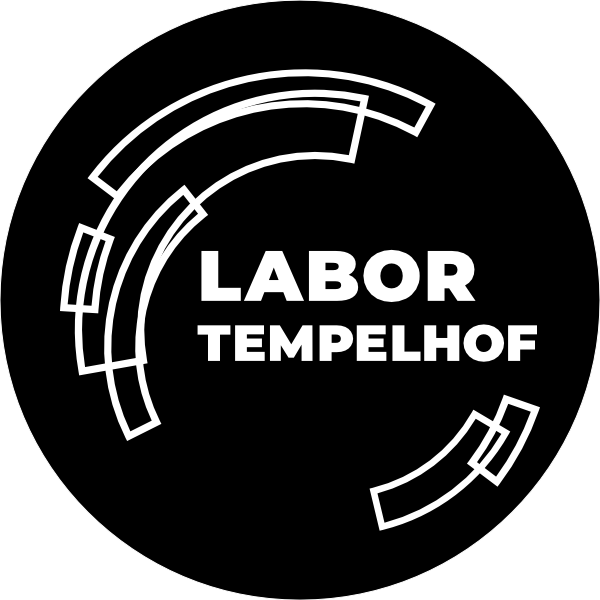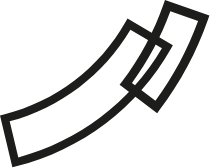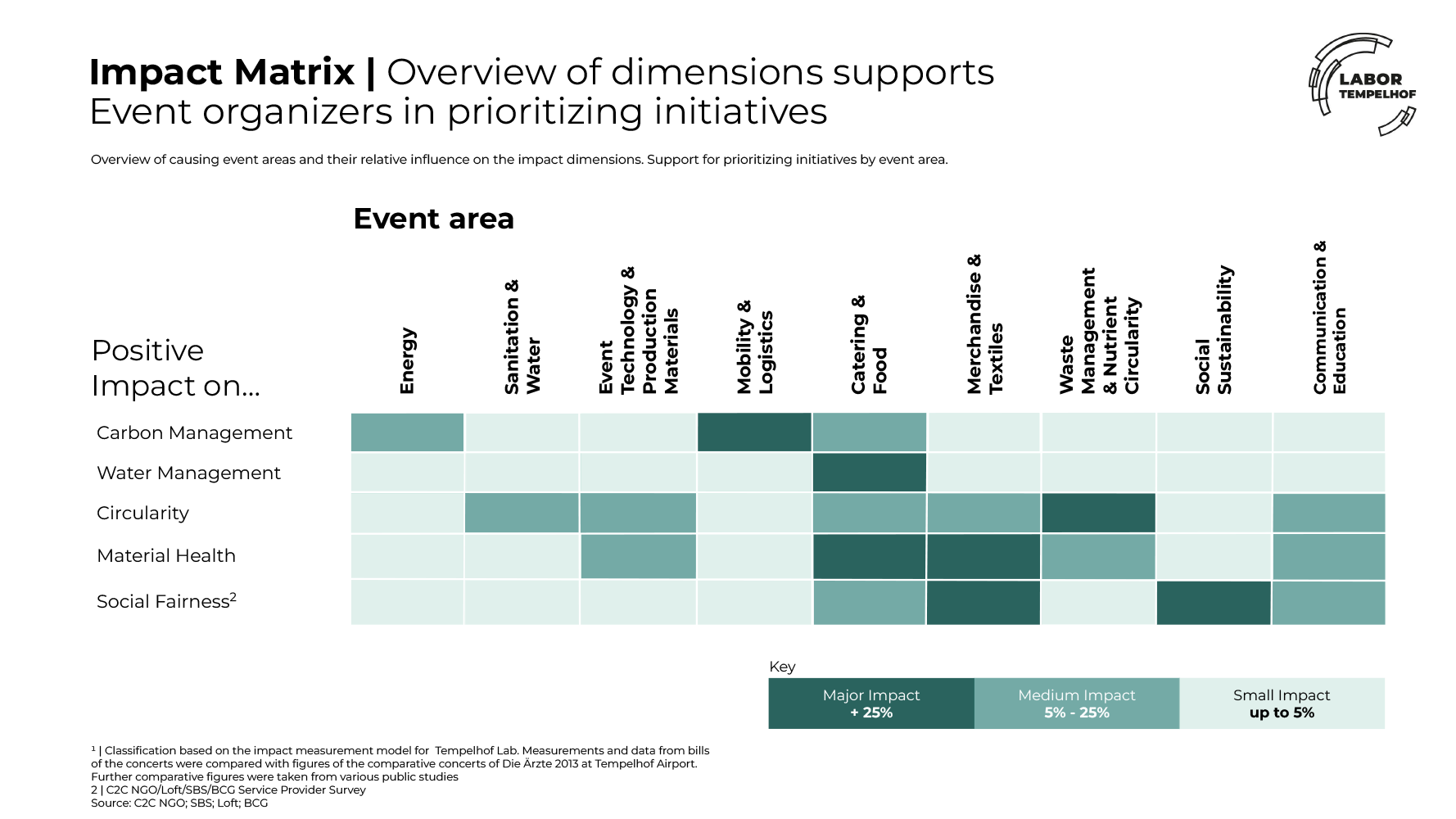Where to start?



Where to start when your objective is the most climate- and resource positive event possible? To make it as easy as possible to get started, we have compiled a few entry points that from our experience at Tempelhof Lab, are relatively simple to implement or have the potential for greatest impact.
It is important to consider not only direct environmental effects onsite but also the indirect effects (so-called scope 2 and 3- considerations 3).
Like the entire Guidebook, the measures listed here and their impacts relate to large-scale concerts at the Tempelhof Airport site in Berlin. The impact and feasibility of the measures can change with the general conditions (location, audience size, etc.) of an event. Therefore, we recommend that you always adapt the measures to your specific event.
- Define your goals! What do you want to achieve? Decrease water consumption? Only eat vegan or vegetarian meals? Use a minimum of 15% circular or C2C-certified products? Set your goals and inform every partner and contractor involved in the planning.
- Good communication with your team, service providers/contractors/vendors and the public about the sustainability measures taken. Use the platform of the performers to educate on the concept and goals of the event.
- Compile and collect as much data as possible (including from your service providers), in order to evaluate the environmental impact. This enables continuous and targeted improvement of the event over time.
- Incentivize travel to the venue by public transportation, bike or on foot. The entry and departure of the public is one of the biggest factors in an event’s carbon footprint.
- Whenever possible, use E-vehicles over combustion vehicles to transport people and goods.
- Use renewable electricity from the grid instead of diesel-fueled generators/units and use authentic green energy from providers who invest the revenues from the sale of renewable energy in the expansion of solar plants and wind power. This is yet another major factor in an event’s carbon footprint and promotes the expansion of renewable energy sources.
- If generators are necessary: do without diesel and use alternative fuels.
Waste Management & Nutrient Circularity
- Create a food and waste disposal system for public areas and backstage that enables proper sorting and circular reuse or composting of as many resources as possible.
- Ideally offer exclusively vegan or vegetarian food, both backstage and to the public. This is one of the biggest factors for the event’s water footprint.
- Use a reusable dishware and deposit system.
Social Sustainability: Equity & Inclusion
- Ensure accessibility to people with disabilities both in planning and during the event.
- Implement a festival safety and awareness (“Safe Space”) concept.
- When purchasing, ensure that products are fairly produced (through appropriate certification).
- To the greatest extent possible, use dry- or compost toilets from which the residual material can go into the biological cycle.
- Check whether gray- or rainwater can be used. This has a large impact on water balance.
- Purchase products made of healthy materials, designed for circularity and manufactured in a fair manner (through appropriate certification).












